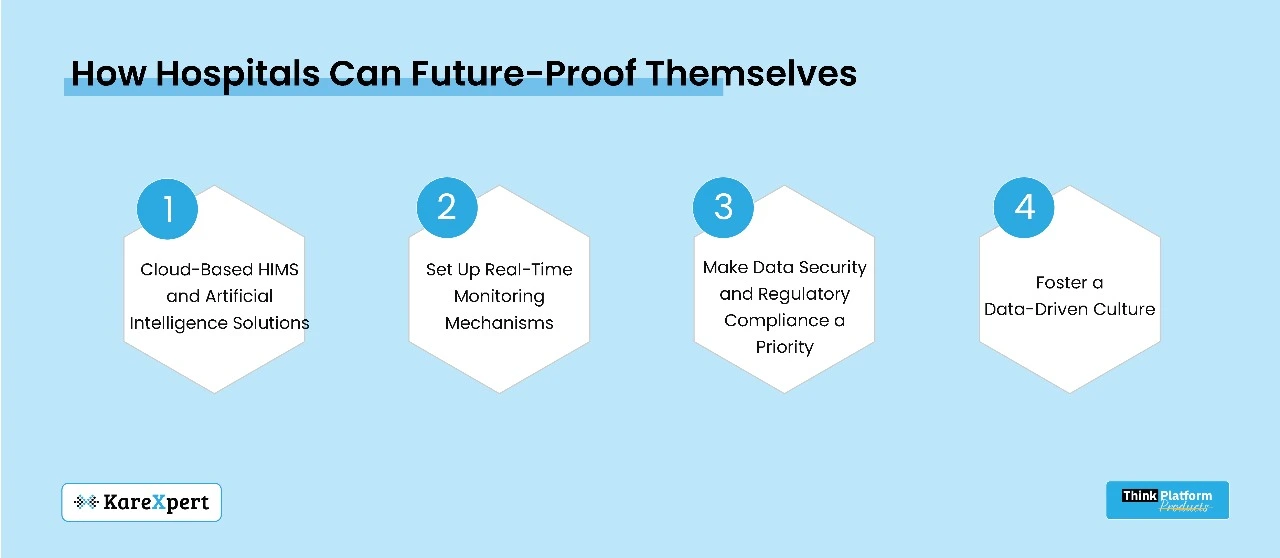If Your Hospital Can’t Handle Real-Time Data, It Won’t Survive the Next Decade

Introduction: A Crisis on the Horizon with Healthcare Data Management
Real-time data is the paradigm of the future for healthcare, but many hospitals still operate using systems that are unable to process information in real-time. If hospitals cannot harness real-time data, they will be left behind—or become obsolete—in less than a decade in an era in which precision, speed, and data-driven decision-making will characterize medical success.
In this piece, we look into how real-time data is becoming the lifeblood of modern medicine, why legacy hospitals can’t keep up, and what they need to do to survive.
Delay of Healthcare Data: Why It Matters in Health Data Directorate
1. Medical Mistakes and Risks to Patient Safety
Without real-time information, hospitals become more susceptible to misdiagnosis, delayed interventions, and administrative inefficiencies. The delay in lab results can hinder timely treatment decisions, resulting in complications. Ineffective monitoring of patients can lead to preventable emergencies. Electronic Health Records (EHRs) aren’t updated in real-time.
2. Trapped in Operational Inefficiencies and High Costs
Traditional hospitals spend millions every year on inefficiencies that real-time data could eradicate:
– Triage bottlenecks: Without live patient data, hospitals struggle to assign rooms, leading to congestion.
– Inefficient resource allocation: A persistent lack of real-time insights stops hospitals from making the most of their staff scheduling and equipment usage.
– Administrative burden: A hodgepodge of paperwork and manual data entry creates bottlenecks in workflow, decreasing efficiency and resulting in high operational costs.
3. Patient Experience Suffers
Patients today expect immediate access to their health information, convenient appointment scheduling, and quick turnaround for test results. Hospitals that lag in real-time data delivery offer lengthy turnaround times for analysis reviews, do not provide real-time telemedicine consultations, and lack integrated care of patients across departments.
The Impact of Real-Time Data on Healthcare
1. Data-Driven Insights for Early Interventions
By gaining access to real-time data, hospitals can replace reactive care with proactive care, mitigating complications and hospital readmissions. Analytical solutions powered by AI help doctors identify likely cardiac arrests ahead of time. Wearable health monitors provide live patient vitals, which means fewer unnecessary emergency room visits. These early warning systems flag worrisome signs of worsening conditions before they become too severe.
2. Inter-departmental Communication in Real-Time
A real-time data framework breaks down silos and allows every department—from preclinical emergency units to surgical theaters—to run in full data synchronization. Doctors can view patient records instantly with live updates. Automated alerts can prompt nurses and specialists to intervene at just the right time. Every decision made based on facts ensures the best use of resources.
3. Virtual Care and Remote Patient Monitoring
Through real-time integration of data, hospitals have extended their reach beyond physical locations. Real-time patient-doctor interactions over telemedicine platforms eliminate physical crowding at hospitals. Tools that monitor chronic conditions, such as diabetes, in patient homes give immediate feedback to providers.
Why So Many Hospitals Are Struggling to Adapt
Despite the clear benefits to the hospital system, the transition into real-time data environments is not yet consistent across hospitals because of:
1. Outdated Legacy Systems
Many hospitals operate on decades-old infrastructure that was never built to manage real-time streams of data. Administration delays due to paper-based documentation and inter-departmental communication are restricted by siloed EHR systems. Unintegrated diagnostic platforms lead to logjams in patient care.
2. Resistance to Change
Real-time data solutions require:
– Staff retraining, which hospitals often reject as a time-eater.
– Critical leadership buy-in that is often absent from bureaucratic systems.
– Cultural changes, as hospitals need to shift from manual decision-making to AI-based.
3. Data Security and Compliance Risks
Protecting real-time data and complying with regulations are major concerns. Data breaches are an increasing danger. Strong encryption is needed for any HIPAA and GDPR compliant healthcare application. Cloud security needs investment yet is often one of the last areas to see funds.
Editor’s note: The above is an excerpt of the article “How Hospitals Can Future-Proof Themselves,” which the authors wrote for McKinsey.com.

1. Cloud-Based HIMS and Artificial Intelligence Solutions
Meanwhile, cloud-hosted systems ease the burden on hospitals by enabling them to scale operations and centralize patient data. As a result, AI-driven automation can lighten the administrative workload, increasing efficiency. Interoperable Platforms ensure seamless translation of data across various hospital units.
2. Set Up Real-Time Monitoring Mechanisms
This enables immediate tracking of patient vitals data through IoT-connected medical devices. Continuous monitoring for chronic disease patients is made possible via wearable integrations. Live dashboards assist hospital employees with managing workflows in real-time.
3. Make Data Security and Regulatory Compliance a Priority
Data privacy and protection through end-to-end encryption. Frequent cybersecurity audits allow hospitals to spot weaknesses. AI-assisted fraud detection systems reduce risks of unauthorized access.
4. Foster a Data-Driven Culture
Guide staff in the use of real-time data to enhance patient care. Offer evidence-based decision-making support to leadership. Collaborate with tech companies for continuous support and enhancements.
The Next Decade: Hospitals That Heal vs. Those That Don’t
If hospitals do not adopt real-time data solutions, they will be badly overloaded with inefficiency, have patients leave for digital-first healthcare companies, and lag behind on compliance and cybersecurity implementations. Conversely, innovative hospitals incorporating real-time data know that prevention before diagnosis saves lives, increases operational efficiencies, and provides a seamless, patient-centered experience.
It’s Time to Move at the Speed of Real-Time
The future of data is now—real-time data is the foundation of modern healthcare. If hospitals do not adopt these solutions, they are likely to become obsolete in the coming decade.
Now, the healthcare industry is at a critical crossroads: it either becomes an adaptive data-responsive organization or faces extinction in an era where agility and timeliness drive the value of care. That decision is not only about upgrading technology; it’s about saving lives, minimizing inefficiencies, and being a healthcare system that grows sustainably.
